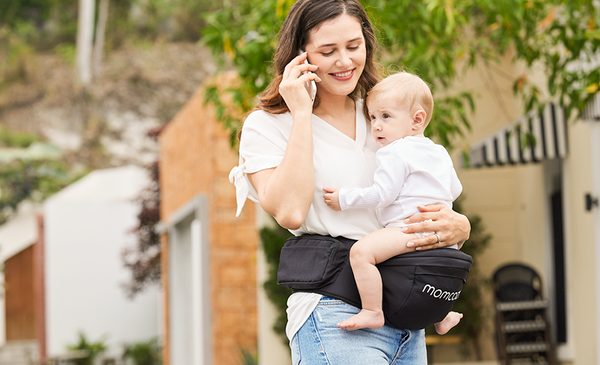Table of Contents
New motherhood is magical, but let's be real - it can also be messy, stressful, and exhausting. As if caring for a newborn isn't hard enough, nursing mothers have the added responsibility of pumping breast milk when away from baby. Finding time to pump amidst the chaos of life with a little one is no easy feat!
If you're a pumping mama, you've likely asked yourself which breast pump works best for your lifestyle. Should you opt for a traditional plug-in electric pump or a trendy new wearable pump? Both have pros and cons, so read on as we dish all the details to help you decide...
Traditional Electric Pumps
Traditional electric breast pumps have been a staple for nursing mothers for decades. Trusted brands like Medela, Spectra, Ameda, and Lansinoh have dominated the pump market with their plug-in electric models designed for powerful, efficient pumping sessions.
These pumps are typically larger in size, about the dimensions of a grapefruit, and need to be connected to an electrical outlet to operate. They come with a two-phase expression technology that uses a motor to create suction and pull milk from the breasts. Milk is pumped through tubing into collection bottles or bags that attach to the flanges.
Advantages of Traditional Electric Pumps
Women appreciate traditional pumps for their adjustable speed and suction settings to accommodate letdown and maintain flow. Many models offer a stimulation or "let-down" mode with lighter, faster cycles to trigger milk ejection, followed by slower cycles with stronger suction to empty the breasts more fully. This two-phase approach mimics the way a baby nurses.
Another advantage of traditional pumps is their impressive suction strength. With motor-driven technology, some can reach over 250 mmHg of suction compared to the weaker suction of manual or wearable pumps. This allows mothers to double pump and collect milk quickly, which is extremely helpful when time is limited.
For working or frequently traveling moms, traditional pumps allow you to pump up large batch volumes and stockpile milk in bottles or bags for later use. This makes them ideal for maintaining or boosting milk supply. The adjustable cycle speeds also help prevent nipple discomfort and sensitivity.
Click here to get more benefits for working moms: Why Working Moms Should Use a Breast Pump?
Disadvantages of Traditional Electric Pumps
On the downside, traditional electric pumps are bulky and tied down to an outlet while in use. They must be plugged in, and the pump parts fully assembled, to start a session. This means you can't multitask or move around while pumping. You need both hands to keep the flanges and bottles securely in place.
While traditional pumps are efficient workhorses, the many parts like valves, membranes, bottles, and tubing do require careful cleaning after each use to prevent mold and bacteria buildup. Their lack of portability and discretion are also drawbacks to consider. But ultimately, their power and reliability make them a top choice for many breastfeeding mothers.
Wearable Breast Pumps
Wearable breast pumps are one of the most innovative and game-changing products for nursing mothers in recent years. Made by brands like Momcozy, the ultra-portable pumps designed by Momcozy are specially designed for active moms with busy lifestyles.
Advantages of Wearable Breast Pumps
The pumps themselves are small, lightweight, and compact. Each device is about the size of a plum or tennis ball that neatly fits inside a bra. The pumps are completely cordless and operate using rechargeable lithium-ion batteries so you aren't tethered to a wall outlet while pumping.
Wearable pumps have soft silicone flanges that align with the breasts comfortably while creating a tight seal. Integrated air tubes apply gentle suction rhythmically to express milk using the latest noiseless pulsating technology. This allows moms to pump discreetly under clothes without notice.
Instead of external bottles, wearable pumps collect the milk into BPA-free storage bags or reusable containers that attach directly to each flange. These stay neatly in place while pumping and some brands even have anti-leak technology to give moms confidence while wearing the pump.
Smart wearable pumps can sync to an app on your smartphone via Bluetooth. The app tracks pump history, monitors session times, and allows moms to customize settings and stimulation modes remotely. Some brands even offer the ability to remotely turn the pump on or off from the app for added convenience.
For busy moms, the ability to pump hands-free while multitasking is a total game changer. Wearable pumps allow you to pump while driving, folding laundry, making dinner, or playing on the floor with baby. You can discreetly pump at work, while traveling, or really anywhere. This flexibility helps takes the stress out of pumping and collecting milk.
Click here if you want to know more about wearable breast pumps
Disadvantages of Wearable Breast Pumps
On the downside, wearable pumps may have less power and suction strength compared to industrial grade traditional pumps. The battery life may only last 2-3 pumping sessions before needing to be recharged. And like all pumps, the small parts require regular cleaning and sterilization. But for many moms, the pros outweigh any cons of these revolutionary pumps.
Key Factors to Consider When Deciding Between Pump Types
When deciding on the breast pumps, some expecting mothers may consider price as the only factor when thinking about breast pumps. This decision-making approach can be one-sided. It's better to make the decision based on your own needs, lifestyle, as well as the price. After all, the breast pump is something you will need to use throughout the breastfeeding period. When selecting a breast pump, these key factors need to be considered:
- Cost – Traditional pumps are typically more affordable, with wearable pumps being a pricier investment. Look for any insurance coverage or discounts if cost is a concern.
- Portability – If you plan to pump on-the-go, during the commute to work, while traveling, etc., a portable wearable pump is your best bet.
- Power and Suction – Traditional pumps are still the winners when it comes to pure suction strength and pumping efficiency. Opt for a wearable pump only if you respond well to gentle stimulation.
- Discretion – Wearable pumps are far more subtle and quiet, allowing you to pump in public or around family/coworkers without disturbing anyone.
- Lifestyle Needs – Consider when, where, how often, and for how long you'll need to pump. This will help determine which pump offers the right perks for your daily routine.
- Cleaning – Traditional pumps involve washing multiple parts, bottles, valves, etc. Wearable pumps still require cleaning but may have less components to disassemble.
- Accessories – Look for pumps that offer multiple flange sizes, milk storage options, batteries, tote bags, and other useful extras.
The Bottom Line
When it comes to choosing a breast pump, there is no one-size-fits-all answer. Traditional pumps and wearable pumps both have their pros and cons. While traditional pumps excel at maximizing supply quickly, wearable pumps are unmatched when it comes to portability and pumping on-the-move.
The pump you select should align with your personal needs and lifestyle. Moms who value convenience and mobility should opt for a wearable pump like those made by Momcozy. But for moms who need to build and maintain ample milk supply, a trusted traditional pump may be preferable.
In general, we have summerized some specific suggestion on who may benefit more from traditional vs. wearable breast pumps:
Mothers may be better off choosing traditional breast pumps:
- Moms who need to pump large volumes of milk or build up milk supply - Traditional pumps empty the breasts faster and more thoroughly. The motorized suction is ideal for mamas who respond best to strong stimulation for let-down and milk ejection.
- Exclusive pumpers - For moms who exclusively feed pumped milk, traditional pumps allow you to double pump and collect larger volumes during each session. This saves time if you pump frequently.
- Working moms with access to electrical outlets - Traditional pumps are great for pumping at a desk or in a private office with an outlet nearby. The powerful suction lets you empty quickly during short breaks.
- Moms with multiples or tandem feeding - Tandem traditional pumps allow efficient simultaneous pumping of both breasts to save time. This is handy when you need to produce milk for two babies.
Mothers may benefit more from a wearable pump:
- Busy moms on the go - Wearable pumps give you complete flexibility and portability to pump whenever, wherever needed. This allows you to multitask and be mobile while pumping.
- Discreet pumpers - For moms who prefer subtle, quiet pumping, wearable pumps are barely noticeable under clothes for privacy.
- Working moms without regular pumping locations - The portability of wearable pumps allows you to pump in the car, while traveling, while working remotely or in shared spaces.
- Moms who only pump occasionally or to relieve engorgement - For occasional pumping needs, wearable pumps provide convenience without being tied to an outlet.
- Moms who respond well to gentle stimulation - If you find strong suction uncomfortable, wearable pumps offer lighter stimulation that may work better for you.
Whichever route you choose, investing in a quality breast pump is a decision you won't regret. As you embark on your pumping journey, remember to be kind to yourself along the way. Give your body grace as you navigate the learning curves and overcoming challenges. With the right tools and mindset, you've got this!















